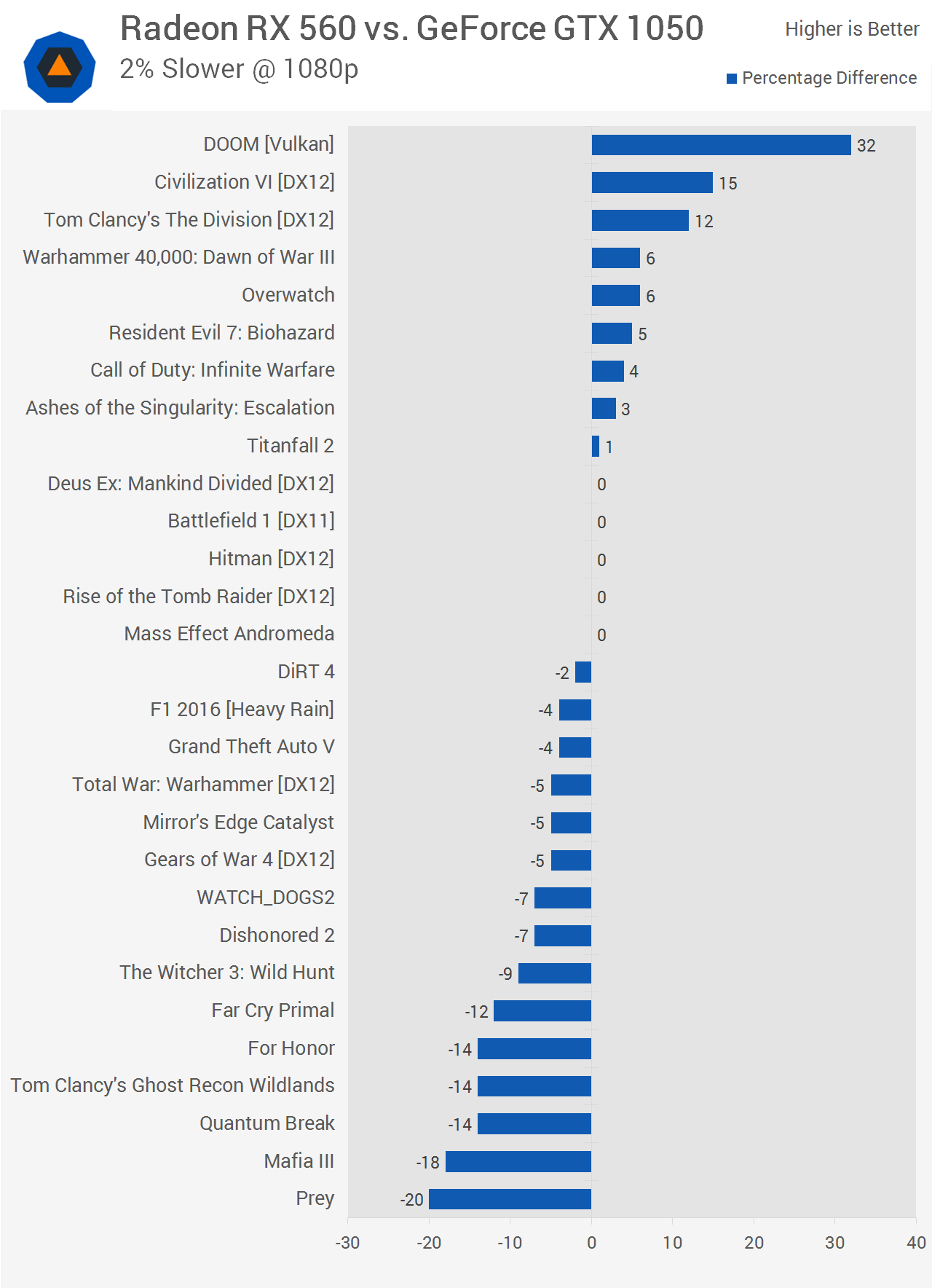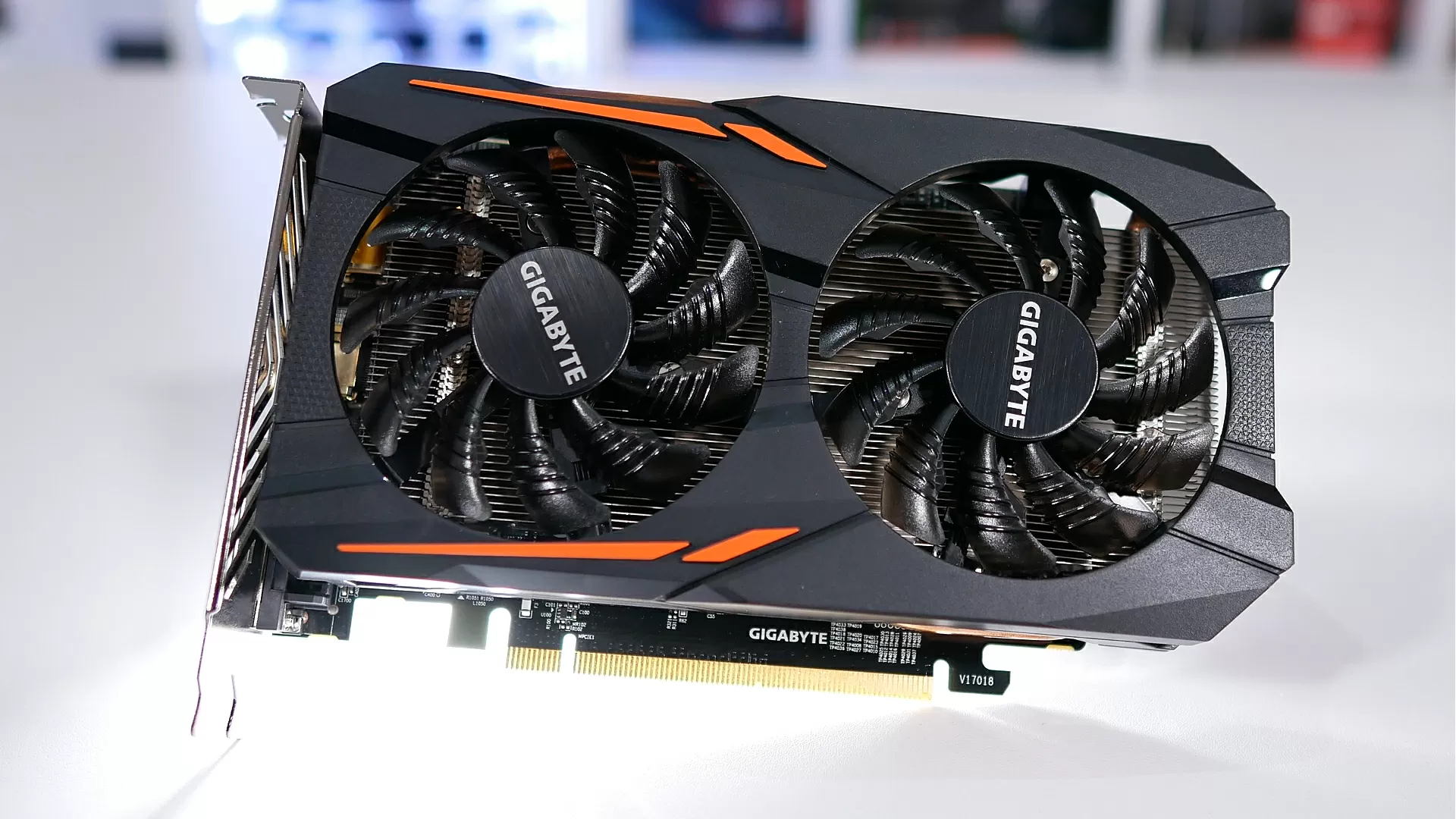Wrapping Things Up: Taking Averages

The GTX 1050 wins comfortably when it comes to power consumption with the entire system using just 144 watts under gaming load, 16% less than the RX 560 in the same system. While a clear loss for the red team in this category, it's not a deal breaker either.
We have a few graphs that summarize the performance covered on previous pages to help you decide which entry-level GPU is the best choice for your gaming rig. First let's take a look at the average performance across the 30 games tested:

When I was summarizing the results for each game it felt like the GTX 1050 was coming out well ahead, so I was shocked to find that performance was much the same overall after tallying up all the results. In fact, the 1050 was just 1fps faster for both the average and minimum frame rate. Let's move on to take a better look at the margins per game.

I love these graphs as they give us a clear picture of the overall performance, highlighting where the wins and losses were. The biggest outlier is obviously Doom and this is a small issue given that it's possible the RX 560 was cheating in this title with its 4GB VRAM buffer. Again, this is the only game I know of that might favor the larger memory buffer under playable conditions for these entry-class GPUs.
I'm not too worried about including Doom's results as removing them only changes the overall standings by a single digit: the RX 560 becomes 3% slower without Doom. Feel free to recalculate if you want but as I said, it doesn't change the overall picture and that's the beauty of testing with such a massive amount of games.
The RX 560 was faster by a 5% margin or greater in just 6 games while it was slower by a 5% margin or greater in 12 games.
So, given their close performance, would I buy the RX 560 or GTX 1050? To me, the choice still seems pretty clear on this one and I'm sticking with the decision I made eight months ago when I first recommended the GTX 1050.
Of the 30 games tested, the 1050 offered superior performance in well over half of them and was also slightly faster overall. On top of that, it consumes less power (doesn't even require an external PCIe power connector) and overclocks better, which is important as many buyers would want to squeeze every last frame from a card in this category.
The RX 560 would have to be a tad cheaper for me to purchase it over the GTX 1050. In my opinion, the only real advantage the RX 560 has is FreeSync support, if you can take advantage of that, then it might make sense at the same price as the 1050.
Shopping shortcuts:
- Radeon RX 560 on Amazon
- Radeon RX 560 on Newegg
- GeForce GTX 1050 on Amazon
- GeForce GTX 1050 on Newegg
To wrap up our latest benchmark battle, I should note that I'm still not a fan of the GTX 1050 Ti unless you can get it at a discount. The Ti edition typically sells for $140, which works out to 40% more than the standard 1050 while delivering just 15% more frames on average.

